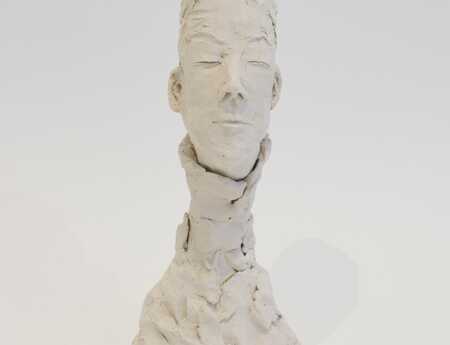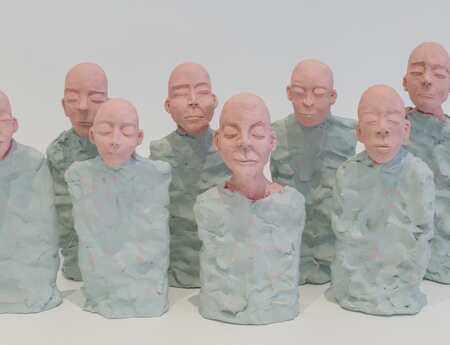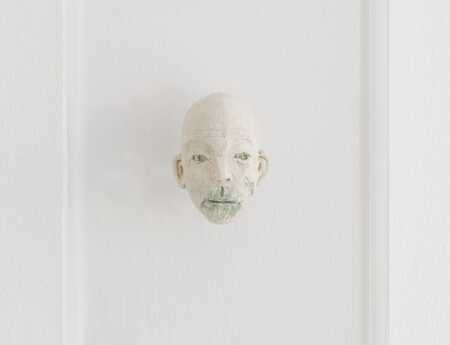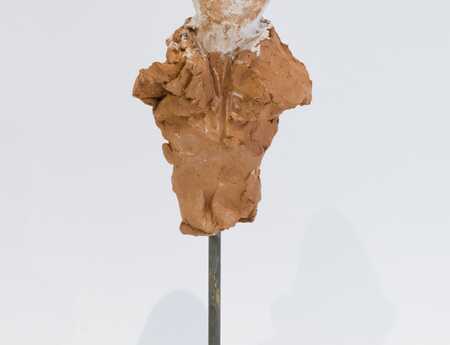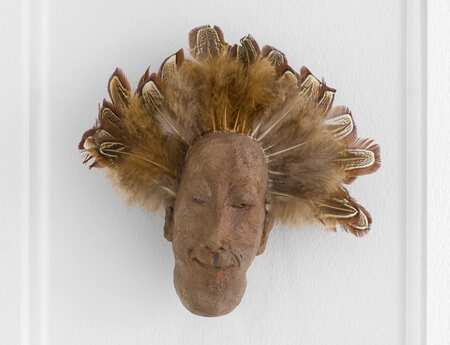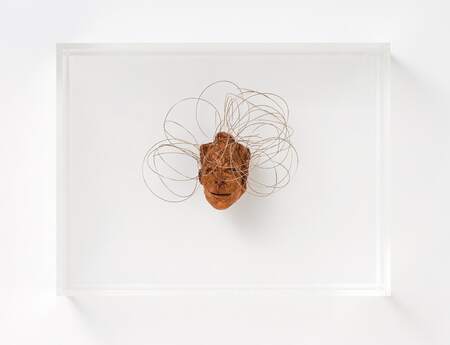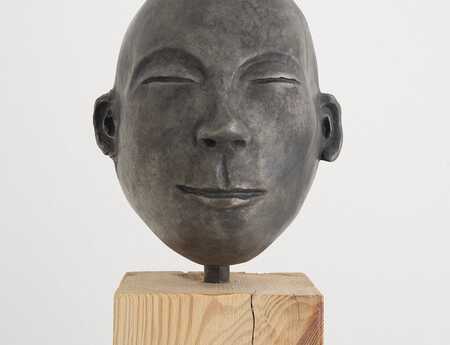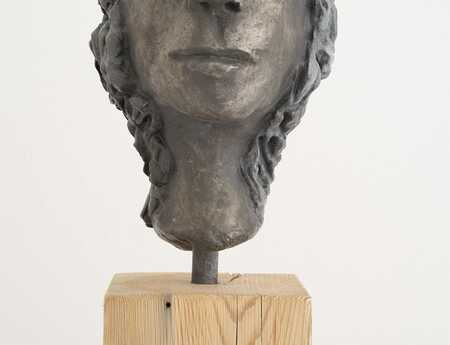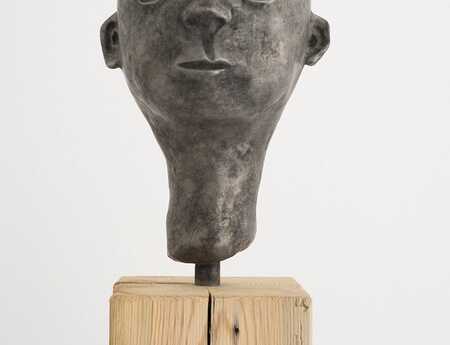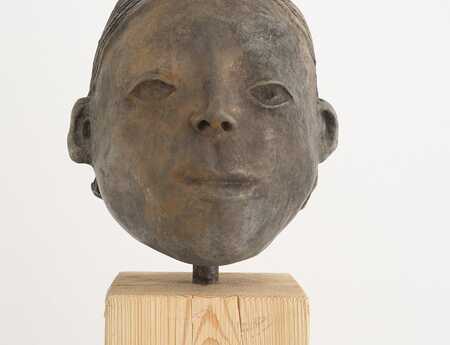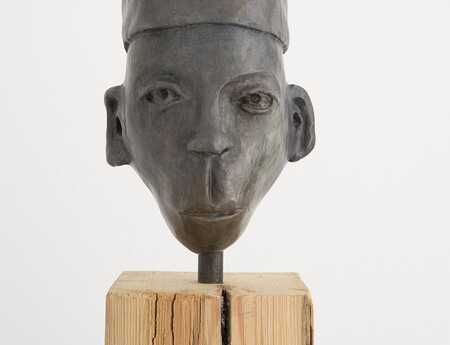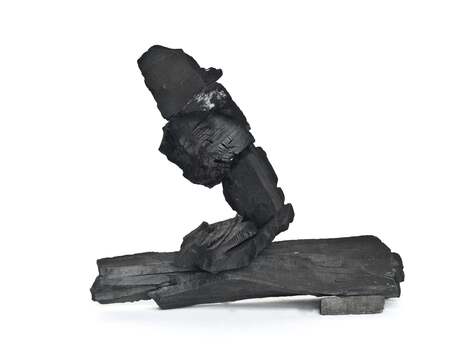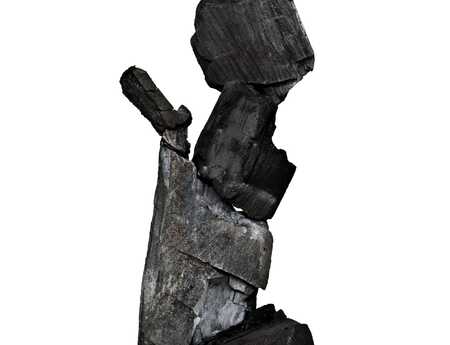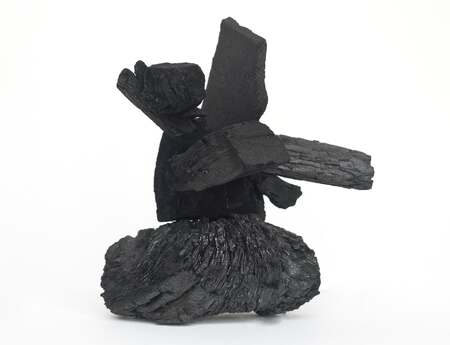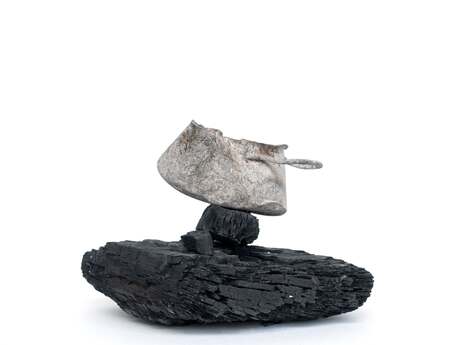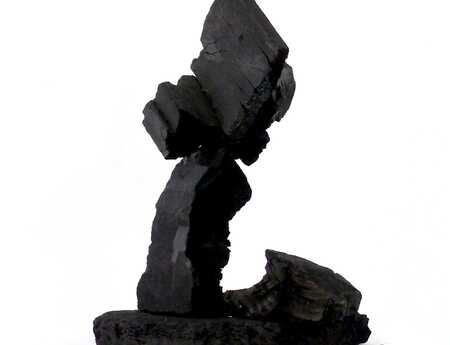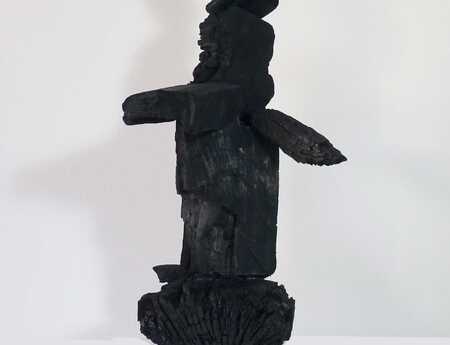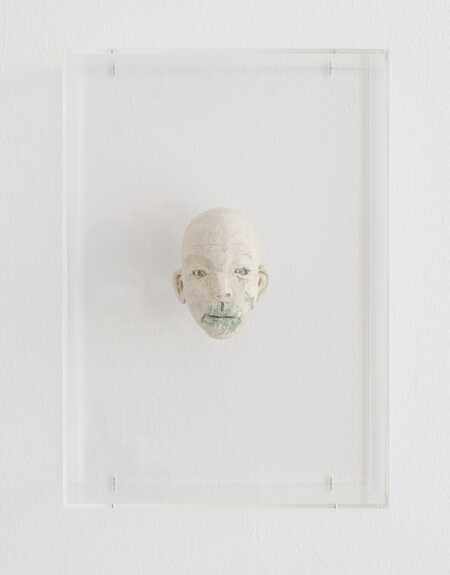
Germany
Patricia Dreyfus
Modelled heads, over and again: floor installations, behind glass, in groups or individually mounted on metal rods. At eye level, with their presence they acquire minimal physical traits and intimacy. In clay or bronze, Patricia Dreyfus’s heads betoken an inner gaze, prompting viewers to adopt a form of introspection that is not infrequently unsettling. The innumerable and occasionally isolated heads in her installation Charbon (Coal), or in the work Le sable (The sand), offer up a plethora of possible readings, leaving one with an unsettling sense of ambivalence. Even those colourful heads in heaps, as in Insomnia, remind us of mass graves or even shrunken heads. On closer and more focused inspection Patricia Dreyfus’s heads mutate into strange protagonists of a seemingly vanished world. But Dreyfus is less interested in relics and history than she is in stories. All her partially coloured clay or bronze heads have personal traits. At first sight they remind us of the familiar miniatures displayed in the glass cabinets of ethnological museums which often conform to idealised images. By contrast, the expressions of the human Têtes, as Patricia Dreyfus calls them, have much more individuality. They resemble portraits of people she might have run into by accident. Yet in their broad diversity they develop their own – self-constructed –mythology.
Skulpturen, Stickereien, Zeichnungen
My work, in which I use different techniques and media, is full of human creatures and symbols. I ask myself questions that are close to me, such as origin, identity and gender in an increasingly confused and uncertain world. I work in series for drawings, embroideries and sculptures. To date, the miniatures I started in 1995, exceed 1500 small heads. All the series are part of a world that I conceive and imagine from my own reality filtered by my observation, making them, I hope, accessible to others, with a little poetry and irony.
